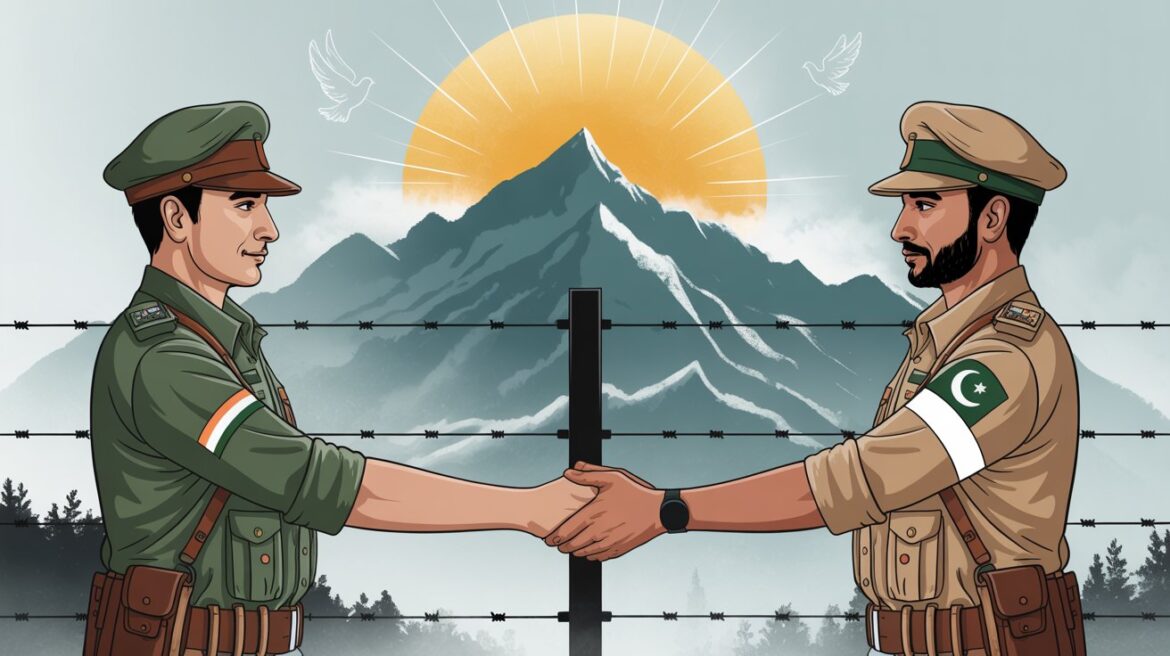In a dramatic turn of events, India and Pakistan have agreed to a full and immediate ceasefire, bringing a sudden halt to what many feared was the beginning of another major regional war. The decision comes after nearly two weeks of cross-border tension, airstrikes, and escalating military engagement. For South Asia, and the world at large, this development offers a rare glimpse of hope.
What is a Ceasefire?
A ceasefire, sometimes written as “cease fire” or even misheard as “seize fire,” is a formal agreement by opposing sides in a conflict to stop fighting temporarily. In the context of war, especially between nuclear-armed neighbors like India and Pakistan, a ceasefire is not just a political gesture—it’s a lifeline.
Historically, ceasefires between India and Pakistan have come and gone, often triggered by international pressure or escalating conflict in Kashmir. But whether temporary or permanent, a ceasefire can prevent countless civilian deaths and economic fallout.
Background: Why Did India and Pakistan Agree to a Ceasefire Now?
The recent escalation began in late April when Indian security forces blamed Pakistan-backed militants for a deadly attack on tourists in Srinagar, the capital of Indian-administered Kashmir. In response, India launched limited air raids on what it claimed were militant camps inside Pakistan.
Pakistan retaliated swiftly, claiming that Indian missiles had struck three of its air bases—leading to fears of a full-scale war. The India Pakistan war 2025 seemed imminent, with hashtags like #IndiaAttacks and #PakistanResponds trending across platforms.
According to Al Jazeera India Pakistan news reports, over 60 people, including civilians, were killed during the skirmishes. The global community watched in alarm, fearing a wider regional or even nuclear conflict.
The Role of Global Diplomacy: Trump and the Ceasefire Push
The breakthrough came after several rounds of late-night diplomacy led by former U.S. President Donald Trump, now a key international envoy, and U.S. Secretary of State Marco Rubio. After talks with the foreign ministers of both nations, and the quiet involvement of Saudi and Turkish mediators, both sides agreed to halt further aggression.
President Trump announced the ceasefire between India and Pakistan live on CNN, calling it “a moment of sanity in an otherwise dangerous week.” His announcement quickly went viral, with CNN News Live and BBC World News Live offering continuous coverage of the development.
Ceasefire in Kashmir: A Fragile Hope
The Kashmir region, long at the center of India-Pakistan tensions, remains under heavy military presence despite the ceasefire. Both countries lay claim to the territory, and violence has flared there repeatedly over the past decades.
India’s Ministry of External Affairs confirmed the ceasefire would also apply to the Line of Control (LoC) in Kashmir. However, local residents and independent observers warn that without real political dialogue, this peace could be short-lived.
What Does This Mean for the Region?
This India Pakistan ceasefire could significantly reduce tension in South Asia, but experts warn that true peace depends on resolving underlying issues. The Indus Waters Treaty, a vital water-sharing agreement, remains suspended, and there’s been no formal commitment to resume it.
Security analysts also warn about the risk of non-state actors—militant groups operating independently—who might attempt to derail peace efforts. Unless both governments take steps to control such groups, the ceasefire may prove fragile.
Reactions from Pakistan and India
Pakistan’s Prime Minister welcomed the ceasefire but emphasized the need for India to show restraint in Kashmir. India, on the other hand, stated that while it values peace, it retains the right to defend its sovereignty.
The Foreign Minister of Pakistan held a press conference on Geo News India Pakistan edition, calling the ceasefire “a diplomatic victory,” while India’s Home Minister reiterated the need for constant vigilance against terrorism.
What’s Next? Possible Outcomes of the Ceasefire
While it’s too early to celebrate, the India and Pakistan ceasefire 2025 agreement has already led to a decrease in troop movements and cross-border firing. Relief camps have been set up for displaced civilians, and airspace restrictions are being lifted.
There are also rumors that representatives from both countries may meet in Geneva under the supervision of the United Nations to discuss long-term peace measures.
Conclusion: A Moment of Opportunity
For a region long plagued by war rhetoric and mistrust, this ceasefire between India and Pakistan is more than a tactical pause—it is a potential turning point. But as many in Islamabad, Delhi, and the border towns of Kashmir know too well, peace is only as strong as the will to maintain it. This is not just about two nations putting down arms. It’s about the possibility of rewriting history.

